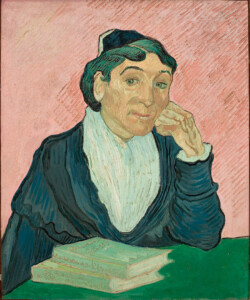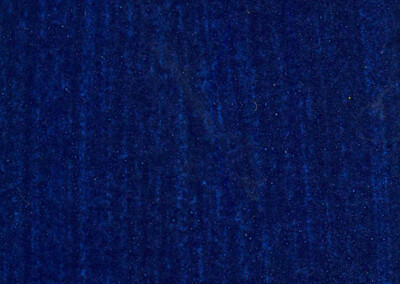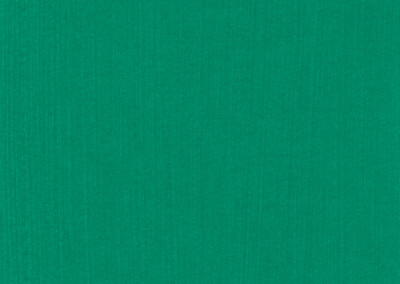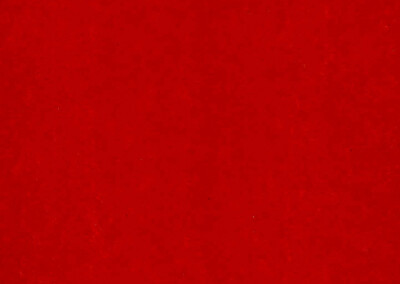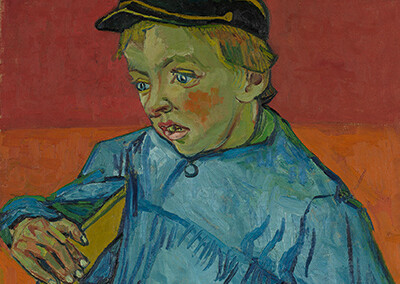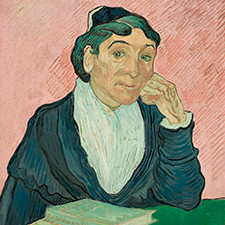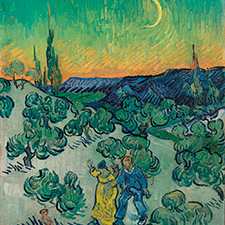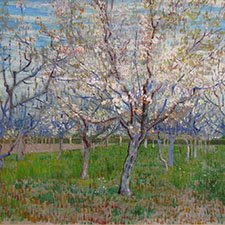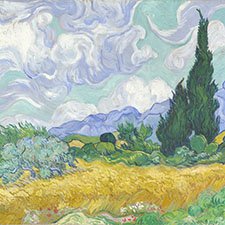Vincent van Gogh, The Arlesienne
1890Paintings sorted by Historical period | Painter | Subject matter | Pigments used
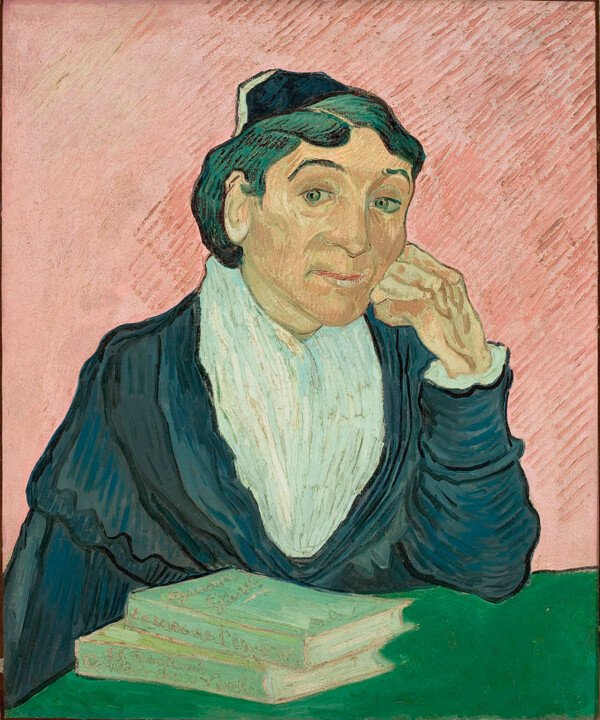
Pink background
Red lake and vermilion lightened with zinc white
Bluish dress
Prussian blue, cobalt blue, emerald green, and probably viridian
Pale green collar
Viridian and lead white
Green books
Emerald green, viridian, and lead white
Dark green table
Emerald green
Flesh tones
Vermilion, emerald green, yellow ochre, possibly viridian, and lead white
Red lips
Vermilion
Hair
Prussian blue, vermilion, emerald green, and possibly viridian
Hat
Prussian blue, vermilion, emerald green, red lake, and possibly viridian
Pigment analysis: hover the mouse over the white points to learn about the pigments used at this spot.
Overview
Medium: Oil
Support: Canvas
Size: 65 x 54 cm
Art period: Post-Impressionism
São Paulo Museum of Art
MASP.00114
The portrait is of madame Ginoux, proprietress of the Café dela Gare in Arles.
Emily Tobin writes about the books in the painting:
“The books in the foreground are Charles Dickens’ Christmas Stories and Uncle Tom’s Cabin by Harriet Beecher Stowe, both of which he re-read throughout his life, reputedly saying of Beecher Stowe, ‘How can you not love a book written by a woman while she was stirring food for her family.”
Overview
Medium: Oil
Support: Canvas
Size: 65 x 54 cm
Art period: Post-Impressionism
São Paulo Museum of Art
MASP.00114
The portrait is of madame Ginoux, proprietress of the Café dela Gare in Arles.
Emily Tobin writes about the books in the painting:
“The books in the foreground are Charles Dickens’ Christmas Stories and Uncle Tom’s Cabin by Harriet Beecher Stowe, both of which he re-read throughout his life, reputedly saying of Beecher Stowe, ‘How can you not love a book written by a woman while she was stirring food for her family.”
Pigment Analysis
Pigment analysis
This pigment analysis is based on the work of the scientists at the State University of Londrina in Brazil (1). The scientists employed the method of X-ray fluorescence to prepare maps of individual pigments throughout the whole painting.

1 The green table: emerald green
2 Green books: emerald green, viridian, and lead white

3 Blue dress: Prussian blue and cobalt blue
4 Turquoise collar: viridian and lead white

5 Flesh tones: vermilion, emerald green, possibly viridian, yellow ochre, and lead white
6 Hair: emerald green, vermilion, Prussian blue, and possibly viridian
7 Hat: emerald green, vermilion, Prussian blue, red lake, and possibly viridian
8 Red lips: vermilion
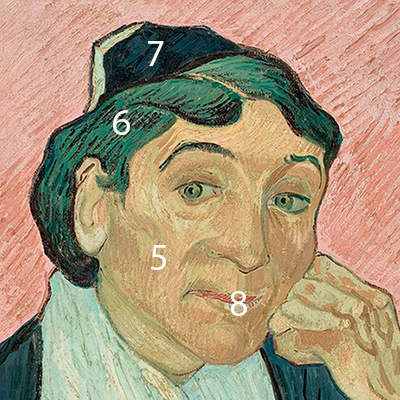
9 Pink background: red lake (cochineal or redwood), vermilion, and zinc white
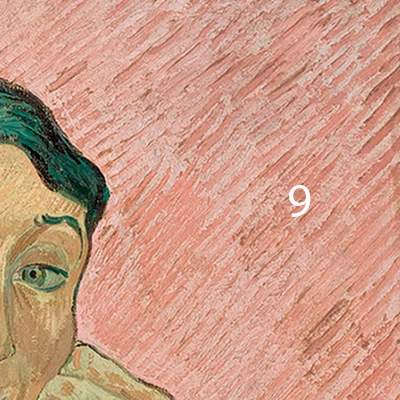
References
(1) Rafael Molari, Carlos Roberto Appoloni, Pigment analysis in four paintings by Vincent van Gogh by portable X-ray fluorescence (pXRF), Radiation Physics and Chemistry 181 (2021) 109336
Pigments used in this painting
Resources
Videos
Video: 'Vincent van Gogh: The colour and vitality of his works' by National Gallery London
Publications and Websites
Publications
(1) Rafael Molari, Carlos Roberto Appoloni, Pigment analysis in four paintings by Vincent van Gogh by portable X-ray fluorescence (pXRF), Radiation Physics and Chemistry 181 (2021) 109336
(2) Lewisohn Buys, Van Gogh’s Famous ‘Arlesienne‘.” Art News 24 (March 27, 1926), p. 1, ill.
(3) Cornelia Homburg. “Affirming Modernity: van Gogh’s ‘Arlésienne’.” Simiolus 21, no. 3 (1992), p. 133.
Websites
(1) Emily Tobin, The untold story: ‘L’Arlesienne’ by Van Gogh, House and Garden

